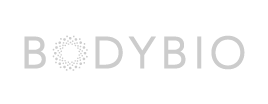The strong bond between mother and baby isn’t just one of the heart and soul, but also a bond between microbiomes. In fact, the most important factor influencing an infant’s microbiome is the mother’s health and wellness. Mothers act as stewards of bacterial genetic information that will be passed along for future generations. The first three years of life are a critical window of time to shape the foundation of health and disease risk for years to come. Building a resilient microbiome in infants has been linked to fewer ear infections, upper respiratory infections, skin disorders, and less allergies1-2. There are many steps we can take to support the mother and baby during this significant time of development. Below are four key areas of importance:
- Pre-Pregnancy: Mom’s health pre-pregnancy is critical to many health outcomes. If possible, plan out six months to correct bacterial dysbiosis, inflammation, intestinal permeability, and nutrient deficiencies. Take inventory of ways to lower exposure to things like glyphosates and xenobiotics that can disrupt microbial populations and increase the toxic burden. Using diet as a foundational tool, encourage consumption of fermented foods, prebiotics, legumes, resistant starches, and organic fruits and vegetables. It is recommended to take a deeper look into microbial compositions, use of a Whole Genome Sequenced stool test enables us to fine-tune and analyze details of commensal species and pathogen occurrence. Use of broad-spectrum spore-biotics can help strengthen microbial diversity and the overall balance between species. Correcting these internal imbalances can also influence the composition of the vaginal microbiome. By correcting vaginal dysbiosis, you have the potential to avoid antibiotics given to group B strep carriers. Additionally, group b strep infections are linked to increased risk for pre-term delivery3.
- Birth Process: Currently, 32% of US births are performed by caesarean. This can result in compositional microbial changes within the baby’s microbiome. While it’s not always within one’s control, striving for a vaginal delivery is the best route for the first exposure to commensal bacteria. Hiring a doula as a birth coach and advocate has been shown to reduce rates of caesarean delivery. In fact, continuous support during labour and delivery has been linked to a 25-39% reduction in c-sections4. Immediately following delivery, try to breastfeed and practice skin-to-skin time to enhance exposure to beneficial organisms. Further, it is customary for birthing facilities to whisk the baby away immediately for their first bath. Delaying the first bath for up to a week can enhance microbial seeding.
If a vaginal delivery is not possible, consider using vaginal seeding to simulate exposure and first inoculation with bacteria. This can be accomplished by inserting gauze into the vaginal canal for at least one hour. Use the gauze to gently inoculate the nasopharyngeal areas of the infant.
- Breastmilk: After an infant is born, the microbiome will greatly evolve during the first few weeks of life. Breastmilk is the perfect fuel source for microbes containing optimal amounts of colostrum, prebiotics, and immunoglobulins5. If a vaginal delivery was not possible, breastmilk can help get the microbiome back on track. Infants fed formula are more prone to overgrowths of Proteobacteria rather than higher levels of beneficial species like Bifidobacterium.
There are many factors that can prevent breastfeeding. Thankfully there are plenty of options to help the support the growth and development of an infant’s microbiome. Look for three key components in infant formula. First, only choose an organic formula. It is imperative to avoid pesticides that can kill beneficial strains of bacteria, especially during the first three years of life. Second, look for a formula fortified with prebiotic fibres like fructooligosaccharides (FOS), galactooligosaccharides (GOS), and inulin. This will help feed beneficial strains of keystone health-promoting bacteria. Third, consider fortifying the formula with human milk oligosaccharides (HMO). Breastmilk naturally contains hundreds of types of oligosaccharides, fortifying with extracted HMO’s will help mimic the composition of human breastmilk. Consider additional supplementing with 1-2 billion CFU of Bacillus clausii to help support and protect the upper respiratory tract6.
- First Foods: Transitioning to solid foods is an exciting milestone in development. Experimenting with new flavours, textures, and smells is the first exposure to good nutrition. It is important to focus on organically sourced foods, as glyphosates destroy cell walls of bacteria. Generally speaking, avoid gluten and dairy in the first three years of life to allow the body to form a strong immune system and intestinal barrier.
While we cannot control all aspects of health and wellness, there are many opportunities to positively modulate the microbiome with functional medicine. Advanced laboratory testing, pharmaceutical-grade nutraceuticals, and a healthy lifestyle can be a powerful tool to keep the mother-baby unit healthy. Taking action within the first three years of life can make a lasting impact on health outcomes.
References:
- Polster, et al. Caesarean section delivery and the risk of allergic disorders in childhood. Clin Exp Allergy. 2005 Nov; 35(11): 1466-72.
- Neu, Rushing. Cesarean versus vaginal delivery: long term infant outcomes and the hygiene hypothesis. Clin Perinatol. 2011 Jun; 38(2): 321-331.
- Bianchi-Jassir, et al. Preterm birth associated with group b strep streptococcus maternal colonization worldwide: systematic review and meta-analyses. Clin Infect Dis. 2017 Nov; 65: S133-S142.
- Bohren, et al. Continuous support for women during childbirth. Cochrane Database Syst Rev. 2017 Jul(6).
- Ballard, et al. Human milk composition: nutrients and bioactive factors. Pediatr Clin North Am. 2013 Feb; 60 (1): 49-74.
- Marseglia GL, et al. Efficacy of bacilillus clausii spores in the prevention of recurrent respiratory infections in children: a pilot study. Ther Clin Risk Manag. 2007 Mar; 3(1): 3-17.











































